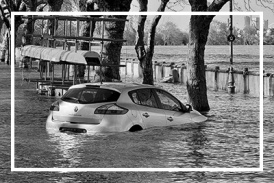New Tech, Less Noise: Directional Audio Gains Traction in Public Spaces
Cities have long grappled with the effects of environmental noise, from traffic and construction to overly loud public address systems. According to the World Health Organization, prolonged exposure to high noise levels can lead to serious health impacts, including sleep disruption, cardiovascular disease, and cognitive impairment in children.
In response, researchers and audio engineers have turned to a more targeted approach: directional sound. Rather than broadcasting audio indiscriminately into a space, directional sound systems deliver focused beams of audio to specific locations or individuals, significantly reducing spillover and minimizing disturbance to surrounding areas.
“In settings like museums, retail stores, public transportation terminals, or even libraries, traditional speakers often contribute to noise clutter,” says Dr. Michael Tanner, an independent urban acoustics researcher. “Directional audio offers a way to communicate clearly without compromising the overall soundscape.”
One of the companies leading this charge is China-based Audfly Technology, whose directional speaker solutions have been deployed in both public and commercial environments. Their proprietary systems use ultrasonic beamforming to create sound zones, allowing audio to be heard only within a narrowly defined area. In cities like Beijing, the technology has been applied to community spaces where public announcements or music need to be heard clearly—without disturbing nearby residents.
A recent case study highlighted the use of outdoor directional speakers in a densely populated district of the Chinese capital, where residents had raised concerns about loud public music events. Local authorities collaborated with engineers to install directional units that reduced perceived sound levels outside the intended audience zone by over 70%.
Beyond community noise management, the technology is also being explored for use in digital signage, healthcare settings, and educational environments—anywhere clarity is essential and quiet is valued.
As cities seek innovative ways to improve livability and meet increasingly strict environmental noise standards, experts believe technologies like directional audio could play a vital role in shaping future soundscapes.
“Reducing noise isn’t just about lowering the volume—it’s about fundamentally rethinking how sound is transmitted,” says Gu, an audio engineer at Audfly Technology. “With directional sound, we can deliver clear messages exactly where they’re needed, without adding to the background noise that burdens public spaces.”
With awareness growing on World Noise Awareness Day, the conversation around smarter, more considerate audio technologies is likely to continue gaining volume.
About Audfly Technology
Audfly is a global leader in innovative audio solutions, specializing in directional sound technology. The company’s flagship Focusound Screen® technology seamlessly integrates sound directly into display screens, delivering immersive audio experiences with enhanced privacy and clarity. Beyond Focusound Screen®, Audfly has developed a diverse portfolio of directional sound products designed for a wide range of applications, including museums, retail stores, digital signage, self-service kiosks, office environments, and home entertainment systems. By precisely controlling sound projection, Audfly’s innovations help eliminate audio spillover, reduce noise pollution, and create customized sound zones, making it the go-to solution for businesses and institutions looking to optimize their acoustic environments. With cutting-edge research and continuous advancements, Audfly is redefining how sound is experienced across consumer electronics, commercial spaces, and professional settings worldwide.
Wei Ke
Audfly Technology
email us here
Visit us on social media:
Facebook
X
LinkedIn
Instagram
YouTube
Legal Disclaimer:
EIN Presswire provides this news content "as is" without warranty of any kind. We do not accept any responsibility or liability for the accuracy, content, images, videos, licenses, completeness, legality, or reliability of the information contained in this article. If you have any complaints or copyright issues related to this article, kindly contact the author above.
USSOCOM Selects Thor Dynamics to Showcase C-UAS Laser Technology as Global Drone Threat Escalates
A Timeless Call to Persevere: R.W. Larson Jr.’s Memoir Inspires Readers to Push Past Limits
All-Pro Commercial Cleaning Earns Top Ratings Across Central Florida—Here's Why Customers Keep Coming Back
Więcej ważnych informacji
 Jedynka Newserii
Jedynka Newserii

 Jedynka Newserii
Jedynka Newserii

Ochrona środowiska

Kraje dotknięte powodzią z 2024 roku z dodatkowym wsparciem finansowym. Europosłowie wzywają do budowy w UE lepszego systemu reagowania na kryzysy
W lipcu Parlament Europejski przyjął wniosek o uruchomienie 280,7 mln euro z Funduszu Solidarności UE na wsparcie sześciu krajów dotkniętych niszczycielskimi powodziami w 2024 roku. Polska otrzyma z tego 76 mln euro, a środki mają zostać przeznaczone na naprawę infrastruktury czy miejsc dziedzictwa kulturowego. Nastroje polskich europosłów związane z funduszem są podzielone m.in. w kwestii tempa unijnej interwencji oraz związanej z nią biurokracji. Ich zdaniem w UE potrzebny jest lepszy system reagowania na sytuacje kryzysowe.
Handel
Nestlé w Polsce podsumowuje wpływ na krajową gospodarkę. Firma wygenerowała 0,6 proc. polskiego PKB [DEPESZA]

Działalność Nestlé w Polsce wsparła utrzymanie 45,2 tys. miejsc pracy i wygenerowała 20,1 mld zł wartości dodanej dla krajowej gospodarki. Firma przyczyniła się do zasilenia budżetu państwa kwotą 1,7 mld zł – wynika z „Raportu Wpływu Nestlé” w Polsce przygotowanego przez PwC na podstawie danych za 2023 rok.
Polityka
M. Kobosko: Surowce dziś rządzą światem i zdecydują o tym, kto wygra w XXI wieku. Zasoby Grenlandii w centrum zainteresowania

Duńska prezydencja w Radzie Unii Europejskiej rozpoczęła się 1 lipca pod hasłem „Silna Europa w zmieniającym się świecie”. Według zapowiedzi ma się ona skupiać m.in. na bezpieczeństwie militarnym i zielonej transformacji. Dla obu tych aspektów istotna jest kwestia niezależności w dostępie do surowców krytycznych. W tym kontekście coraz więcej mówi się o Grenlandii, autonomicznym terytorium zależnym Danii, bogatym w surowce naturalne i pierwiastki ziem rzadkich. Z tego właśnie powodu wyspa znalazła się w polu zainteresowania Donalda Trumpa.
Partner serwisu
Szkolenia

Akademia Newserii
Akademia Newserii to projekt, w ramach którego najlepsi polscy dziennikarze biznesowi, giełdowi oraz lifestylowi, a także szkoleniowcy z wieloletnim doświadczeniem dzielą się swoją wiedzą nt. pracy z mediami.


![Nestlé w Polsce podsumowuje wpływ na krajową gospodarkę. Firma wygenerowała 0,6 proc. polskiego PKB [DEPESZA]](https://www.newseria.pl/files/1097841585/fabryka-nesquik_1,w_85,r_png,_small.png)






.gif)

 |
| |
| |
|